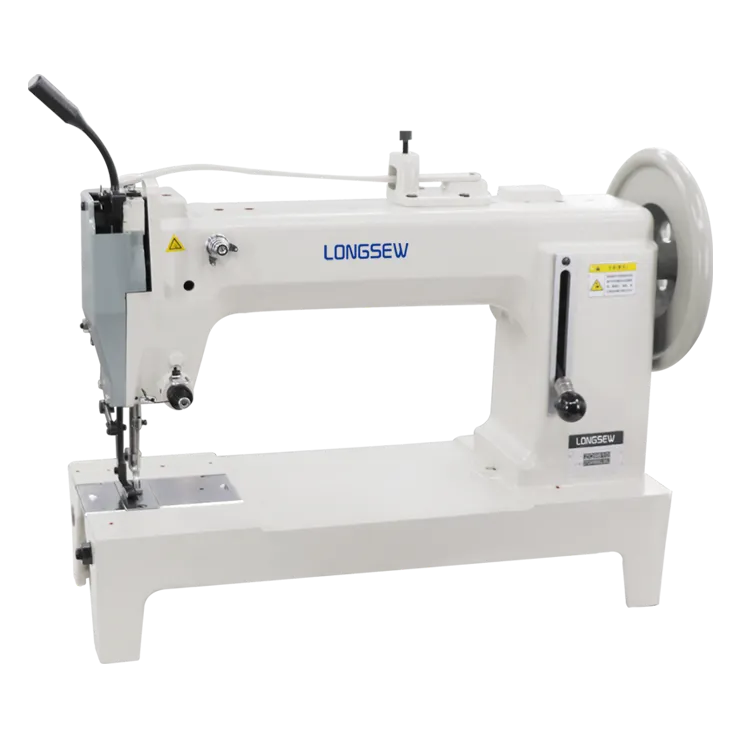Determining the Expense Involved in Operating a Zigzag Sewing Machine Efficiently
The Cost of Zig Zag Machines Understanding the Investment
Zig zag machines, widely utilized in the textile and garment industries, have become integral tools for various sewing applications. Their unique ability to stitch in a zig zag pattern allows businesses to enhance fabric flexibility, durability, and overall aesthetics. However, as with any machine, investing in a zig zag machine involves careful consideration of costs and benefits.
Initial Investment
The initial cost of a zig zag machine can vary significantly based on several factors, including brand, features, and capabilities. Basic models may start at a few hundred dollars, while industrial-grade machines equipped with advanced technology can cost several thousand dollars. Businesses must assess their specific needs—size of operations, volume of production, and type of fabrics used—to determine the appropriate investment level.
Operating Costs
Beyond the initial purchase price, operating costs are another vital aspect of the overall investment in zig zag machines. These costs typically include maintenance, repairs, and the necessary supplies such as threads and needles. Regular maintenance is crucial to ensure optimal performance and longevity, prompting expenditures for specialized cleaning and repair services. Moreover, the type of threading and fabrics used can influence the frequency of maintenance, impacting this ongoing cost.
Labor Costs
zig zag machine cost

When considering the total cost of ownership, one must factor in labor costs associated with the operation of zig zag machines. While these machines generally simplify processes, skilled operators are often required to ensure efficient and high-quality output. Training new employees adds another layer of costs, particularly for businesses that prioritize precision in their stitching patterns. The time taken to train operators can also temporarily impact productivity and revenue.
Increasing Efficiency
Investing in a higher-quality zig zag machine may incur an initial premium but has the potential to drastically increase efficiency and reduce long-term costs. Advanced models often come equipped with automated settings, enhanced speed, and built-in features that minimize operational errors. These efficiencies can lead to increased production capacity, reduced labor costs, and improved fabric usage—ultimately yielding a higher return on investment.
Market Trends and Considerations
The zig zag machine market is continuously evolving, with new technologies emerging to meet the demands of modern manufacturing. Businesses must stay informed about industry trends, such as the shift towards automation and smart technology, which can guide their purchasing decisions. Investing in a newer machine with advanced capabilities may offer better features at a comparable price to older models, making it crucial for businesses to continuously evaluate their options.
Conclusion
In conclusion, the cost of zig zag machines encompasses more than just the purchase price; it involves a holistic view of initial investments, operating and labor costs, and potential for increased efficiency. By carefully analyzing these factors, businesses can make informed decisions that align with their operational goals and financial capabilities. Ultimately, investing in a zig zag machine can lead to improved productivity, enhanced product quality, and a significant competitive edge in the ever-evolving textile and garment manufacturing landscape.
-
Boost Production Efficiency with a Pattern Sewing MachineNewsAug.29,2025
-
Industrial Excellence with the Best Heavy Duty Sewing MachineNewsAug.29,2025
-
Precision and Power with the Best Pattern Sewing MachineNewsAug.29,2025
-
Reliable Bulk Packaging Starts With the Right FIBC Sewing MachineNewsAug.29,2025
-
Advanced Packaging Solutions: Elevate Productivity with Jumbo Bag Sewing Machine and Industrial Stitching EquipmentNewsAug.29,2025
-
High-Performance Solutions for Bulk Packaging: FIBC Sewing Machine and MoreNewsAug.29,2025
-
Maximize Efficiency with an Industrial Cylinder Arm Sewing MachineNewsAug.28,2025


























